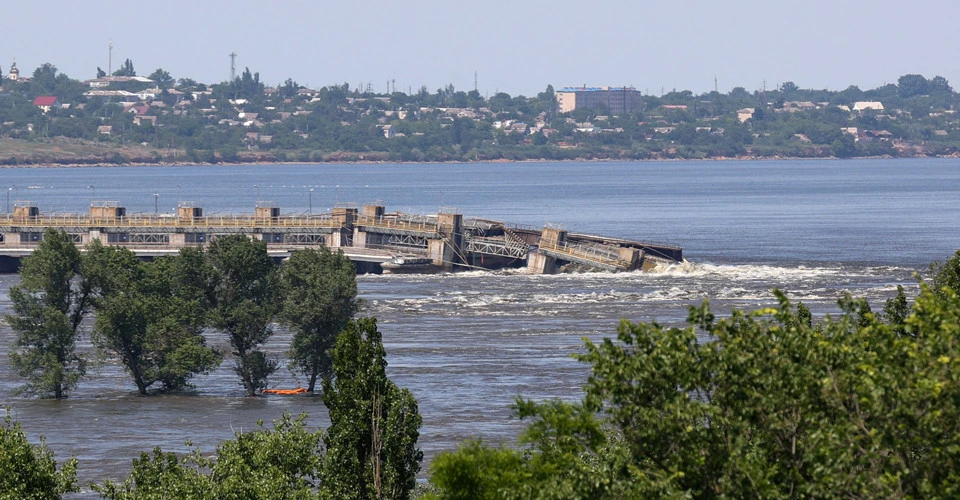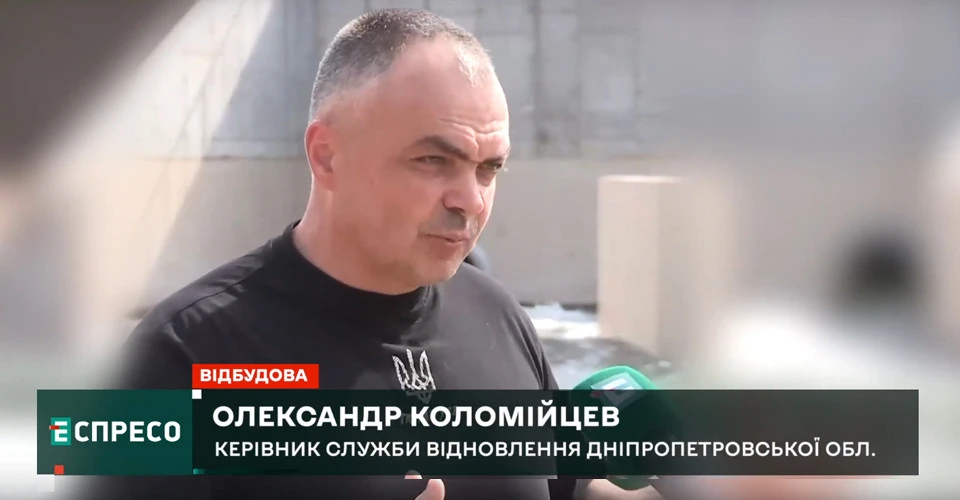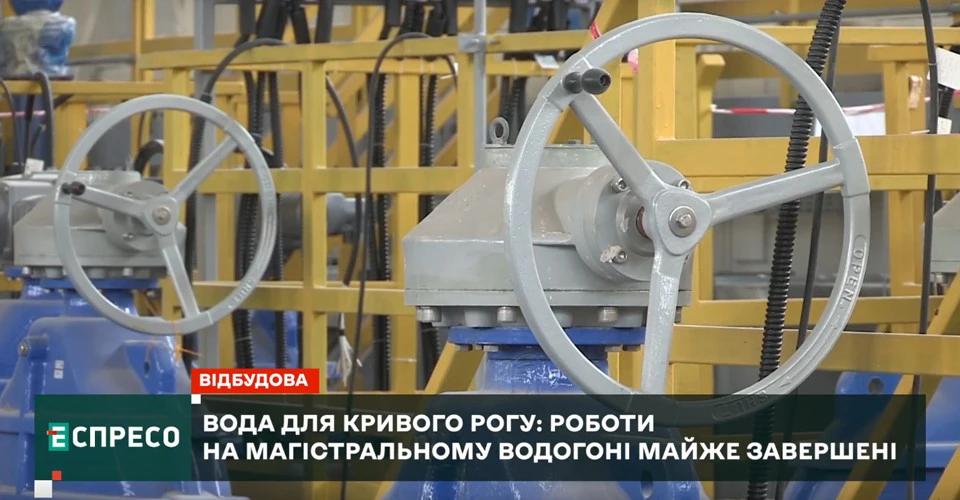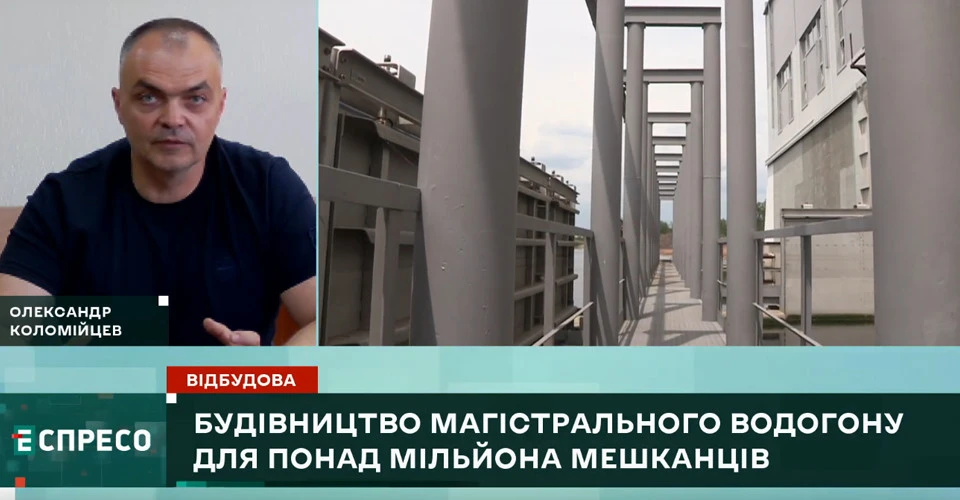
Kakhovka HPP destruction: how Ukrainians built water main to Kryvyi Rih in a year
In just 11 months, Ukraine has successfully launched three sections of its main water supply system, totaling 155 km, providing drinking water to approximately 1.5 million people
The special issue of the Urban Reconstruction and Development Program on Espreso reports.
On the night of June 6, 2023, the occupying Russian army destroyed the dam of the Kakhovka hydroelectric power plant. Four major canal systems - North Crimean, Kakhovka, Dnipro-Kryvyi Rih, and North-Rohachytska irrigation system - drew water from the Kakhovka reservoir. As a result of the dam's destruction, residents in the Kherson, Zaporizhzhia, and Dnipropetrovsk regions faced a severe shortage of one of their basic human needs: access to water.

However, on July 19, 2023, construction began on the main water pipeline connecting the Ingulets River to the Southern Reservoir. Currently, three sections of this pipeline are operational.
Oleksandr Kolomiitsev, the head of the Service for Restoration in Dnipropetrovsk Region, stated, “Typically, the design work for such facilities takes 2-3 years, and construction can also take another 2-3 years. So, if we approach it in the traditional way, it could take up to 6 years to establish a water supply system like this.”
Read also: Rebuilding Ukraine: How Lviv city and region are recovering from Russian attacks

Seventy-six days after the Kakhovka HPP was destroyed, the first line of the Ingulets to Southern Reservoir water main was launched, delivering an initial flow of 100,000 cubic meters of water. Now, plans are underway to lay the fourth line of the water supply system.
“Currently, we are supplying up to 300,000 cubic meters of water, depending on which pumps are operational and their capacity. This meets the water needs of Kryvyi Rih and other cities that previously relied on the Kakhovka reservoir,” said Oleksandr Kolomiitsev.
This water pipeline is designated as a critical infrastructure facility and has been designed to withstand potential power outages, ensuring that water will continue to flow from the taps even without a stable power supply.
By the end of August, the fourth pump at the Inhulets to Southern Reservoir section will be commissioned, allowing the entire system to operate at its full design capacity.
This main water supply system has become one of the most ambitious projects of its kind, with a total cost of nearly UAH 19 billion. Once completed, it will be able to transport 550,000 cubic meters of water per day. Thanks to this unique project by the Agency for Restoration, water has returned to homes in Kryvyi Rih, Nikopol, Marhanets, and Pokrova.
Read also: Rebuilding Ukraine: how towns in Kyiv region are being restored after Russian occupation
Oleksandr Kolomiitsev, the head of the Service for Restoration in Dnipropetrovsk Region, shared more details about the reconstruction efforts with Espreso.
"When we began building this water supply system, we calculated the number of residents who relied on the Kakhovka reservoir for water. This total includes 1.5 million residents from Dnipropetrovsk, Zaporizhzhia, and Kherson regions - a significant number. We have already resumed water supplies to major cities that previously depended on the Kakhovka reservoir,” he said.
According to him, the Russian forces actively obstructed the construction of the water pipeline.
"In the direction of Nikopol alone, about 10 pieces of equipment used for constructing the water pipeline were destroyed. Workers were in safety gear, wearing bulletproof vests and helmets, and they often took shelter in bomb shelters before heading to the pipeline site to work between shelling. In some areas, they worked around the clock to meet a very tight deadline. We realized that 1.5 million people were without water, which motivated everyone to keep working, even under such difficult conditions,” said Kolomiitsev.
How challenging is this project to implement?
According to the head of the Service for Restoration in Dnipropetrovsk Region, specialists studied previous experiences of building water pipelines in Ukraine before starting the work.
"The most relevant experience dates back to the 1990s. Those pumps and pipelines were outdated, and the technology was no longer suitable. Back then, some sections took up to three years to complete, like the Dnipro-Western Donbas canal. In contrast, we launched the water supply system in just 11 months. During this time, we designed, built, and began supplying water to residents in the Dnipropetrovsk region,” Kolomiitsev explained.

According to Kolomiitsev, Ukraine engaged donors to expedite the construction of the water pipeline, as it quickly became clear that no manufacturers had pipes of such large diameter available. He emphasized that, despite the war and logistical challenges, Ukraine accomplished what seemed impossible in less than a year.
“Even foreign ambassadors visited the site and remarked that we had achieved the impossible. Typically, a project of this scale would take two to three years to design, and here we are, nearing completion,” Kolomiitsev noted.
He added that only the fourth pump remains to be launched, and work is ongoing to enhance the surrounding area and nearby buildings.
Other recovery projects in Dnipropetrovsk region
Kolomiitsev stated that his agency is not focused on rebuilding everything damaged by Russian shelling. Instead, they are responsible for the energy sector, water supply, bridges, and roads. He noted that the roads in the Dnipropetrovsk region are a top priority due to the significant amount of cargo that travels on them.

In total, the agency oversees more than 3,000 kilometers of national roads, and they are working to keep all of them in passable condition with the funding available in the region.
Kolomiitsev noted that all restoration timelines are outlined in the project documentation, but even so, experts are working to complete the projects as quickly as possible.
He emphasized that the reconstruction of critical infrastructure includes measures to protect against future enemy attacks, though he declined to elaborate for security reasons.
Additionally, he mentioned that local authorities play an active role in the reconstruction process. Local residents can submit proposals for restoration to military administrations, which then relay these requests to the government.
“We focus on the final stage of reconstruction. We don’t gather information about damage or destroyed properties; our role is to restore what has been destroyed and is on the list for restoration,” the official explained.
He added that, like the rest of the country, the Service is facing budget constraints but continues to operate within the limits of available funding.
- News













































